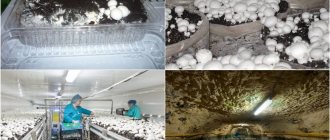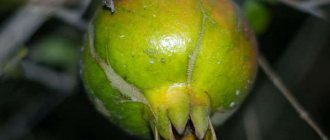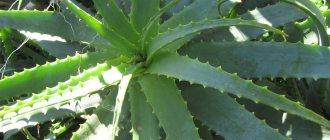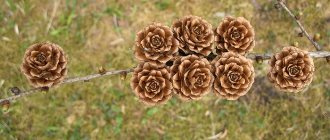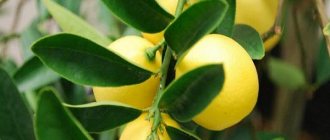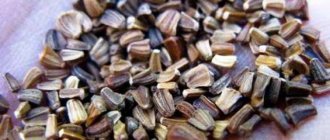The high cost of truffles is due to the fact that this mushroom is very rare. Under natural conditions, truffles grow mainly in the forests of France, Italy, and Great Britain. Truffles have learned to be grown on farms, and these countries annually export up to 100 tons of this mushroom.
Truffles are also found in the south of Russia in mixed forests. The peculiarity of the truffle is that in order to reproduce, its spores must pass through the intestines of a person, animal or insect. Only in this case does a mycelium form from them.
There are about 60 species of truffle mushrooms in nature. They all grow deep underground and have a strong aroma. Only three types of truffles are eaten:
- "Black" or "French";
- "White" or "African";
- "Chinese" or "Asian".
Types of truffles
Other truffle mushrooms emit the smell of rotten onions or spoiled fish. The truffle fly lays larvae in such mushrooms. These pests spread the spores of inedible truffles in swamps and peat bogs.
Truffle flies can infect the fruiting bodies of delicious mushrooms. Small black dots will be visible on the truffle tuber. Even if at the time of harvest the mushroom affected by the truffle fly looks fresh, it is not sent for export. This truffle is used to form new plantings.
Truffle fly
A little about the truffle family
Of course, truffles are called not only species belonging to this genus, but also some others that are morphologically (in shape and structure) reminiscent of them. So-called “true truffles” are much more valuable than “truffle-like” ones, but they are very similar in terms of the growing conditions required. These mushrooms are characterized by the fact that they grow underground, right between the roots of trees, and therefore belong to the category of mycorrhiza-forming ones (forming a close symbiosis of mycelium with tree roots).
The origin of these mushrooms and the number of their species is not completely known. We can say that this is a poorly studied taxonomic group in biology. The fruiting bodies of truffles are especially valuable, edible, and, most importantly, delicious. They have a round or tuber-like shape, have a dense, fleshy or cartilaginous structure, and are covered on top with what are called “warts.” In general, their appearance is far from attractive, which sharply contrasts with the taste of representatives of the Truffle genus. There is an opinion that you only have to try this mushroom once in order to be forever imbued with this magical aroma and wonderful taste, which have captivated people at all times.
How to properly store collected mushrooms
Truffles do not last long, which is one of the reasons why this product is not found in supermarkets. If you grow them for yourself, the best time to consume them is during the harvest season.
But these mushrooms are grown not for personal consumption, but for sale. And preserving the product is a very difficult task.
But there are several ways to extend the shelf life of a valuable product:
- Store truffles without removing the soil . Soil is the natural habitat of the fruiting body and mycelium. It protects them from pests and interaction with an aggressive external environment. Experts insist that the mushroom must be cleaned from the soil immediately before consumption.
- Fridge . Low temperatures allow food to be preserved longer. In our case, the shelf life will increase by 2 times.
- Store in a container with dry rice . This method is one of the oldest. It is often used to dry mobile phones. Dry rice absorbs excess moisture. But the truffle needs to be wrapped in dry parchment. This is necessary to preserve the natural moisture of the mushroom. If you interact directly with rice, it will simply dry out and lose its value.
To delve deeper into the topic, read the article “Business plan for growing mushrooms.”
Physiology of taste
Even in ancient Rome, people admired the greatness of this mushroom. It was even considered healing and was used by doctors of that time to prepare remedies aimed at improving “men's health.” It was believed that he was able to give a person unimaginable strength and endurance. In the Middle Ages, there was an opinion that truffles had mystical properties and were capable of giving a person supernatural powers.
Truffles have been considered a special delicacy since the 15th century AD. It was then that Italian chefs began to use this unsightly, irregularly shaped mushroom in their dishes, which they called tartufo (“tuber”). At the same time, French chefs from the central regions of the country began to use truffles for cooking, but they did not position it as a delicacy, but considered it simply a “filler”. Then truffles began to be collected in Russia, in the Moscow province. According to legends, some particularly cunning “miners” attracted bears to their hunt, whose teeth were first pulled out, since they found underground mushrooms much easier.
Truffles began to be grown artificially in France only in the 19th century. Then there were entire “truffle forests” in every region of the country. They were available to almost any ordinary citizen at the holiday table. At the same time, the famous chef Jean-Anselme Brillat-Savarin wrote his still popular book “The Physiology of Taste”, in which he devoted an entire chapter to the “diamond of the kitchen” - the truffle, describing both its taste and aphrodisiac qualities.
However, the First World War, coupled with environmental degradation, had a very bad effect on truffle cultivation in France. And, if before the 20th century 100 tons of mushrooms per year were collected only from the territory of one region, then after the First World War the annual harvest of truffles in the entire country still did not exceed 20 tons.
How justified are investments in such a business? - real reviews
There are no well-known Russian businessmen involved in the cultivation and sale of these mushrooms. This is due to the high difficulty of obtaining a large harvest in Russia.
On several forums there are stories about “shadow” businessmen growing up to 20 tons of product per year. There is information about the mafia in Europe, which does not allow outside companies to enter the market. But no documentary evidence of such stories could be found.
This product is actively sold and bought in Russia, although not at such high prices as we would like. And this means only one thing: the business is paying off.
Growing on an industrial scale: myth and reality
Today, truffles are not grown on an industrial scale, but are obtained in natural conditions with the help of animals: truffle flies, dogs, pigs. The flies lay their eggs in the soil next to the truffle, and their larvae move towards the fruiting body of the mushroom to obtain nutrients and pupate. Swarms of such flies are clearly visible, which is why people have learned to find mushrooms with their help. Also, dogs and pigs who find “deposits” of mushrooms undergo special training.
Artificial cultivation of truffles as a business requires a lot of money, effort and energy, if only because they require a special soil composition. In addition, the truffle never bears fruit in the first year. However, according to experts, such a business allows you to receive consistently high earnings, but also requires high costs. People who have been involved in such a painstaking task as growing truffles claim that it takes an average of six years for the fruiting bodies to fully ripen. Without a doubt, this is a fairly impressive period of waiting time for payback. However, it is argued that the game is worth the candle. The soil produces a harvest for 30-35 years on average. A plantation of 1 hectare produces about 15-20 kilograms of truffles. Their cost will be about 500-600 dollars. Restaurants can serve as a distribution channel, the owners of which will quickly sell out the products, even those grown in artificial conditions. The most progressive economists also advise creating an online store or posting information about sales on online auction sites - this will allow truffles to be sold faster and more efficiently not only to restaurants, but also to gourmets who want to prepare gourmet dishes with an amazing delicacy in their kitchen.
There are two possibilities for cultivating truffles: at home, that is, in an open area, or in a closed area - in a greenhouse.
Hypertension can be hidden. Recognize in time
A recent study found that hidden hypertension, which is not recognized during routine medical examinations, increases the risk of heart attack and stroke. For its timely detection, it is recommended to regularly measure blood pressure at home.
Many people have normal blood pressure readings at the doctor's office, but high blood pressure at work or at home. Home monitoring can help identify such people, research shows.
A new study of more than 5,000 people from four countries found that people with this type of hidden hypertension have an increased risk of heart attacks and strokes. But the good news is that home blood pressure monitoring can help you recognize this phenomenon and take preventive measures.
It is known that cardiovascular diseases often occur in people with normal blood pressure. But most people measure their blood pressure only during medical examinations.
By inviting volunteers to measure their blood pressure at home, Steissen wanted to find out what other factors influence the risk of developing heart disease. The original plan was to study patients with so-called “white coat hypertension,” the opposite syndrome in which blood pressure is high during a doctor's examination but normal at home.
Research has found that masked hypertension increases the risk of heart attack and stroke by 55%, while white coat syndrome increases the risk by 42%. Even compared with patients being treated for high blood pressure, masked hypertension increases the risk by 76%—likely because patients with this type of hypertension do not receive the necessary treatment.
Steijsen adds that regardless of diagnosis, people with risk factors—smokers, obese people, older adults—should regularly monitor their blood pressure at home to detect elevated blood pressure early.
Growing truffles in garden beds
To begin with, a territory is selected that meets all the requirements of fastidious mushrooms. Tree seedlings are infected with mycelium and then planted in the ground at an average distance from each other. Trees are planted in soil specially prepared for this purpose.
One tree is planted in a 4x4 meter square. At the same time, there should not be more than 500 trees on one hectare of land. Fertilize the soil long before planting, since the mycelium can be damaged by fertilizers. On each square of land, holes are dug into which water is poured, then a tree is placed. After this, the hole is filled with soil and watered. The planting depth should be at least 70 centimeters, which helps keep the mycelium unharmed when temperatures change and protects it from pests.
Purchasing mycelium and infecting tree roots
Mycelium should be purchased from specialized stores or from reliable suppliers. To infect one seedling you will need 100 g of dry or 150 g of fresh mycelium. The approximate cost of this amount of material ranges between 500 and 1500 rubles.
Each truffle variety has its own specific requirements for growing conditions, so you need to carefully study them before starting a business. The easiest way is to grow black truffle artificially.
Option of dry mycelium for growing tuffles
It is easier to infect an adult tree, but in this case the mycelium rarely takes root. The roots of seedlings are often treated. It is recommended to choose common hazel or holm oak with a height of 30-50 cm for this purpose.
First, the root system is treated in a container with a composition of peat and mycelium in liquid form. The trees are kept in a sterile room for two weeks. Before entering, you need to disinfect your clothes and hands.
Afterwards, the tree is planted in the ground, where the roots of the mycelium will grow within a year. If you don’t want to bother with this, you can immediately purchase grafted seedlings. Young seedlings can be grown independently from acorns that grew in the same area as truffles. Trees are planted in spring in warm and well-calmed soil. The depth of the holes is approximately 75 cm. After placing them in them, the plant is watered and covered. The area around the seedling is mulched within a radius of 40 cm. The average planting density is 500 plants per 1 hectare.
Planting mycelium in the ground
To infect the soil with mycelium, seed material is purchased in the substrate or on a substrate. It is necessary to prepare equipment, soil and compost for planting. The best time to plant truffles is from May to August. The mycelium takes root well when the weather outside is stable and warm and there are no night frosts.
Black truffles are planted in the ground to a depth of 20-60 cm according to a 2 by 2 m pattern. It is recommended to ask the seller how deep to dig a hole, as this depends on the specific type of mycelium. In wooded areas, deepening occurs along the perimeter of the circum-trunk circle. There are 3-4 holes made there with a diameter of 10 cm.
The landing site is cleared of weeds and foreign objects, and then loosened. It is convenient to remove a large number of weeds with a herbicide with components that promote rapid decomposition. When planting a truffle, the hole is first filled with water and fertilized with compost. Seed material is placed on the prepared cushion. It is covered with earth, compacted tightly and watered again with 10 liters of water.
Often special preparations are used for watering. This is especially true for greenhouse plantings, since it is more difficult to achieve natural conditions for truffle growth there. The planting site is mulched with sawdust or straw to a thickness of 15-20 cm and covered with polyethylene.
Algorithm for growing truffles
- Loosen the soil.
- Apply fertilizers a season or two before planting, or not apply them at all.
- Divide the soil into 4x4 meter square sectors.
- Pick up a tree seedling. Both oak (holm or pedunculate), and spruce, pine, fir, hazel, flax or sequoia may be suitable.
- When purchasing mushroom mycelium, experts recommend choosing French black truffle for growing with seedlings.
- Infect seedlings with mycelium.
- Dig at least 70 cm holes for seedlings.
- Fill the holes with water.
- Plant a seedling with mycelium in the hole.
- Cover with soil.
- Carry out mulching (lay at least 40 centimeters of soil with the remains of dry leaves).
- Cover the area within a meter radius of the tree with polyethylene.
- Regularly water the trees and “feed” them with NPK fertilizers.
Soil requirements
- The presence of high humus content in the soil.
- High degree of mechanical tillage.
- The soil pH should vary between 7 and 8.
- The soil should not contain any mushrooms.
- Weeds are not allowed to grow around trees.
- Growing conditions should be close to the natural conditions of a temperate continental climate.
- In the spring-summer period, the temperature should not be lower than 16 degrees Celsius and higher than 22 degrees Celsius.
- The area where planting is carried out must be relief.
White truffles are grown in the same way as black truffles, however, in order for them to bear fruit most quickly and efficiently, it is recommended to graft the mycelium, which costs about $10, not onto oak, as is the case with black, but onto a walnut tree. The soil must also contain a lot of humus and have a high level of alkali, which can be tested with ordinary litmus paper. If acid is present, it will turn blue. This cannot be allowed. Under no circumstances should rabbits or pigs be allowed near truffle planting sites - they are considered the main pests for these organisms.
Harvesting
Small bumps on the surface of the ground will tell you when it’s time to harvest. The body of the mushroom is located approximately at a depth of 20 cm and weighs 0.5-1 kg. The black truffle is oblong, firm and dark in color.
Black truffles
Sometimes the truffle can protrude almost to the very surface. To make the mushroom ripen better, it is sprinkled with sifted sand. If there are truffle midges above a certain place, then an adult truffle is located there.
Experts dig up mushrooms at night, as at this time their smell becomes stronger. The truffle should be dug out carefully with a small spatula. Damaged mushrooms are sold much cheaper. One place gives about 6 mushrooms. The more time the mycelium grows, the larger the size of the circles and the number of fruits.
Growing in artificial conditions
The artificial cultivation of truffles is of interest to farmers all over the world. And this is no wonder: the mushroom is considered “royal”, grows in very small quantities in natural conditions, is practically not cultivated, and has a high price. A comfortable environment for the habitat and development of these fungi is an open flat area where mixed forests grow, with a temperate continental climate.
It is very important to comply with all the conditions necessary for the mushroom: the truffle is very “capricious” and “demanding”. However, the level of development of technology and technology makes it possible to obtain a good harvest of mushrooms in areas where the climate does not correspond to the desired one. There, mushrooms are planted in basements, greenhouses, greenhouses and other enclosed spaces. At the same time, winter temperatures should not fall below zero, and summer temperatures should not rise above 22 degrees.
To grow in a greenhouse, in addition to all greenhouse equipment, you will need:
- Mushroom mycelium purchased in advance.
- Wood or sawdust.
- Soil with remains of leaves.
- Nutrient solution.
First of all, you need to prepare the soil for planting in a special way. Firstly, it needs to be loosened well. It is even recommended to sift the soil to avoid mechanical damage and “oxygen starvation” of the mushrooms. Secondly, check with indicators or instruments whether the alkali level is sufficient. Thirdly, increase the calcium and humus content. Fourthly, the soil is covered with sawdust and soil with the remains of leaves. Fifthly, the soil is saturated with nutrients.


